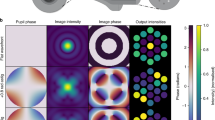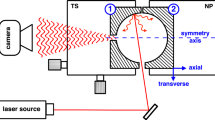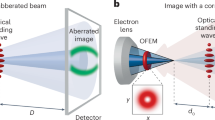Abstract
IF the spherical aberrations of a cylindrical symmetrical optical system are known in the form of a series:  it is possible to deduce the equation of the orthotomic wave-surfaces to the rays defined by (1), as has been shown by Picht1. Picht gives a recursion formula proceeding from the higher terms to the lower, which is very inconvenient if the constants a, b, c, ... increase rapidly, as is ordinarily the case. It is possible, however, to obtain a recursion formula proceeding from the lower terms to the higher, which has been found very useful for practical purposes while analysing the concentration of light near the geometrical focus2 by the Debye–Picht method.
it is possible to deduce the equation of the orthotomic wave-surfaces to the rays defined by (1), as has been shown by Picht1. Picht gives a recursion formula proceeding from the higher terms to the lower, which is very inconvenient if the constants a, b, c, ... increase rapidly, as is ordinarily the case. It is possible, however, to obtain a recursion formula proceeding from the lower terms to the higher, which has been found very useful for practical purposes while analysing the concentration of light near the geometrical focus2 by the Debye–Picht method.
This is a preview of subscription content, access via your institution
Access options
Subscribe to this journal
Receive 51 print issues and online access
$199.00 per year
only $3.90 per issue
Buy this article
- Purchase on SpringerLink
- Instant access to full article PDF
Prices may be subject to local taxes which are calculated during checkout
Similar content being viewed by others
References
Picht, J., “Optische Abbildung”, 164 (Braunschweig, 1931).
A paper dealing with this subject is to appear in RAD Jugoslavenske Akademije, Zagreb.
Author information
Authors and Affiliations
Rights and permissions
About this article
Cite this article
HAVLICEK, F. A Formula for determining the Wave-Surface if the Spherical Aberrations are Known. Nature 168, 743 (1951). https://doi.org/10.1038/168743a0
Issue date:
DOI: https://doi.org/10.1038/168743a0



